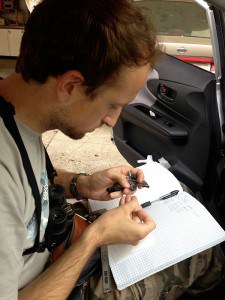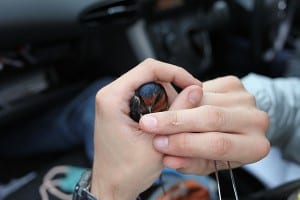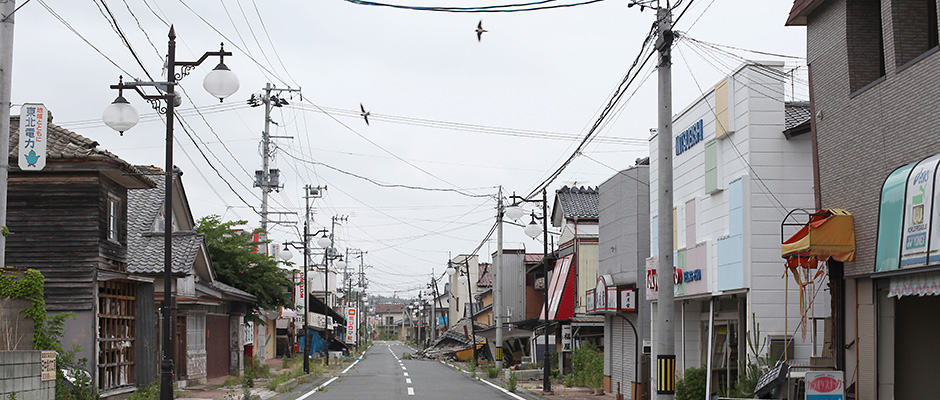Share this article
Nuclear Radiation Impacts Fukushima Birds
Some birds in highly radioactive areas of Fukushima in eastern Japan have dropped significantly in numbers over the four years since the nuclear disaster occurred.
In 2011, radioactive material began to leak from a Fukushima nuclear power plant after an earthquake-triggered tsunami struck the power plant. The disaster forced many residents from their homes and rendered the food from farms in the area inedible.
Now, three recent studies examine how subsequent high radiation rates affect birds in the region, whether these effects change over time and how they compare to other bird species in areas surrounding Chernobyl in Ukraine.
“The effects of radiation are increasing over time despite the fact that the radiation levels are decreasing,” said Tim Mousseau, a professor of biological sciences at the University of South Carolina and an author of the studies.
A Wave of Effects in Japan
One of the studies, published in the Journal of Ornithology, tracked the effect of radiation on 57 bird species from a few months after the Fukushima disaster through subsequent years.
Mousseau and a team of researchers monitored 400 areas around Fukushima with differing radiation levels, paying attention to natural landscape features that have a tendency to limit or encourage bird populations.
“You can identify birds either by catching a look at them or listening to their songs,” Mousseau said, adding that they also worked with local ornithologists to get reliable species information about the birds in the area.

A researcher takes a blood sample from a Fukushima barn swallow chick for genetic analysis.
Image credit: T.A. Mousseau.
The work wasn’t necessarily straightforward due to high levels of gamma radiation. “There’s no way to protect yourself other than to minimize the amount of time you spend in these areas,” Mousseau said. The researchers couldn’t eat the food or drink the water and they weren’t allowed into certain areas. But by rotating between areas with more radiation and other areas, they managed to minimize their exposure to radiation.
The birds weren’t always so lucky, though — especially the resident populations species, which were hit harder than migratory birds that were not in the area when the disaster occurred. “The resident species were actually in Fukushima when the disaster occurred whereas most migrant species didn’t show up until later,” Mousseau said. And the consequences of this initial exposure has only worsened each year since the disaster occurred, according to their research, despite the fact that background radiation levels are slowly decreasing.
“Many species have been negatively impacted and the impacts appear to be increasing with time,” he said, noting that bird species like barn swallows (Hirundo rustica) and some warbler species have been particularly hard-hit. Both the numbers of species and population abundance are decreasing in many areas — likely due to radiation accumulating in the birds’ bodies even as it decreases overall in the area.
Surprisingly, some species, such as the oriental turtle dove (Streptopelia orientalis) and the narcissus flycatcher (Ficedula narcissina) showed increased numbers in more radioactive areas, possibly due to reduced competition or predation pressure. “Not all species were negatively affected and some species even appeared to be positively affected.”
From One Disaster to Another
This wasn’t Mousseau’s first radioactive experience. In fact, he was working on similar research near Chernobyl in Ukraine when the tsunami caused the nuclear disaster at the Fukushima Daiichi plant.

A barn swallow in hand. Swallows have shown increasing numbers of white patches of feathers since the Fukushima disaster occurred – a finding that matches similar occurrences around Chernobyl.
Image credit: T.A. Mousseau.
“After years of doing work in Chernobyl we’re reasonably able to protect ourselves,” he noted. Another recent study, also published in the Journal of Ornithology, compared some of the effects on birds between the Ukrainian and Japanese disaster sites.
“The first thing we noticed in Chernobyl was that many birds had tufts of white feathers where they shouldn’t have white feathers,” Mousseau said. But they couldn’t absolutely prove this was related to radiation until the same thing started happening to birds in Fukushima, where they found one bird with this kind of partial albinism in the first year after the disaster. The white-feathered birds kept popping up more and more after that, with effects getting “larger and larger.”
Mousseau said that the effects in Fukushima have been stronger than those in Ukraine, though he acknowledges that this could be due to the Chernobyl site being much older at this point. “In Chernobyl the effects are fading, animals have had time to adapt,” he said. “In Fukushima the animals are still relatively naïve in terms of radiation.”
Radioactive Barn Swallows
The most recent study, published in Scientific Reports this month, tracked the effects on barn swallows, a relatively easy species to track due to the fact that they are loyal to the same mud nests throughout their lives.
“It’s easy to see where there are barn swallows and where there have been barn swallows,” Mousseau said, adding that it’s also easy to catch them and look for signs of radiation.
The results showed that barn swallows have declined in areas of high radiation.
Some positive news was that in the barn swallows in Japan, there was little evidence of genetic damage whereas some swallows and other species did show accumulated genetic problems in Ukraine. Overall, birds in Chernobyl showed smaller brains and lower reproductive capacity. Mousseau acknowledges that for this recent study they still weren’t allowed in some of the most heavily affected areas of the disaster so it’s possible that swallows in the worst parts could have genetic problems.
“We don’t have enough birds from these really radioactive areas to really be confident at this stage,” he said, but he’s working on getting permission — and funding — to go into these areas for bird testing. Perhaps surprisingly, he’s had no shortage of student volunteers to help with the research, which aside from birds also includes examinations of the effects on insects and trees in the Fukushima area. But he hopes future studies can add to researchers’ understanding of the effects of nuclear radiation on wildlife.
Header Image:
A lonely pair of barn swallows fly about the abandoned town of Futaba in Japan. A recent study found that barn swallows had lower survival rates in Fukushima after the disaster occurred at the nuclear plant.
Image Credit: T.A. Mousseau








